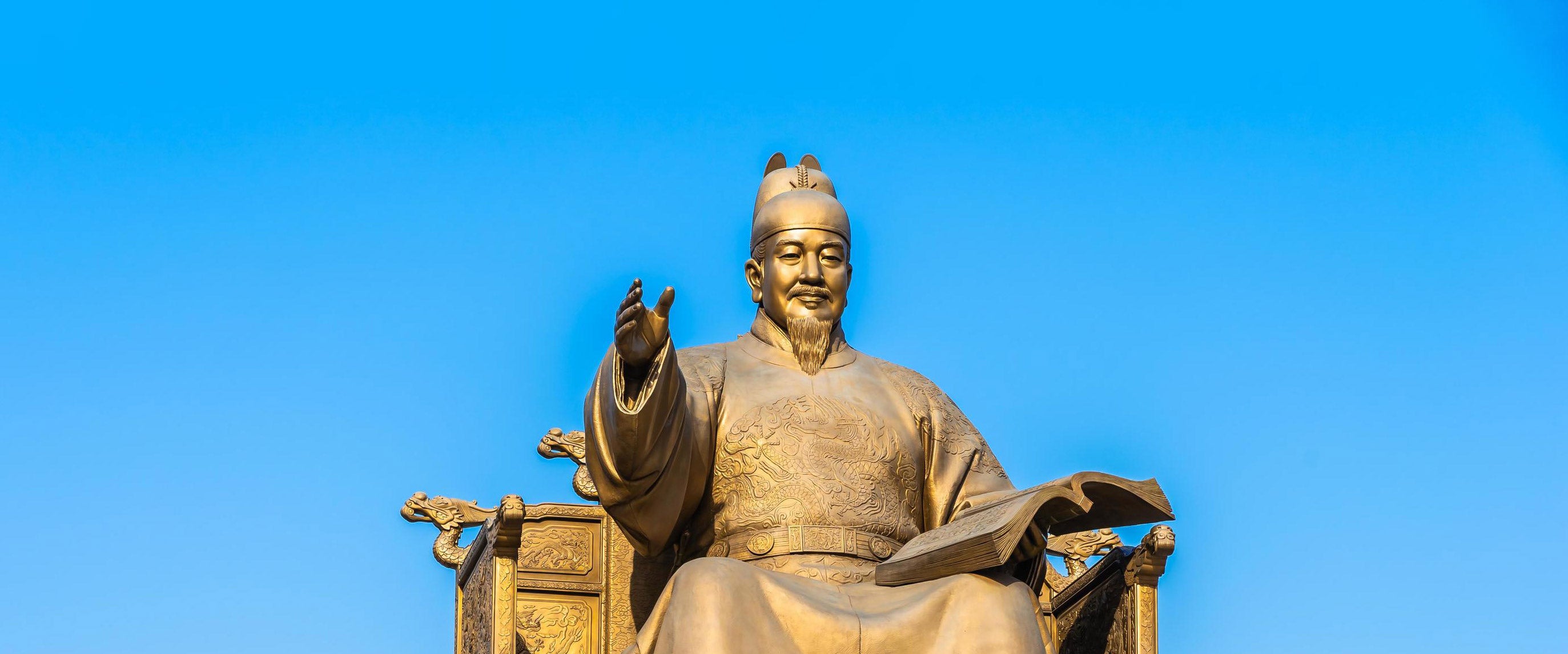
Statue of King Sejong the Great (Seoul, South Korea)
The Korean alphabet, known as Hangeul, is still rather young compared to most written languages and has only been around for 577 years. Invented by King Sejong the Great in 1443, he sought to create a writing system allowing people of all class types to become literate. In 1446, Hangeul became the official writing system of Korea. Prior to Hangeul, Koreans used Chinese characters called ‘Hanja’ which served as symbolic meaning rather than the actual sound representation of the Korean language. This proved to be nearly impossible for the common people to learn and resulted in being exclusively practiced by the elite class.

1st form of Korean alphabet
The Hangeul alphabet consists of 24 characters (14 consonants and 10 vowels) and was designed to be comprehended easily. King Sejong had been quoted saying, “A wise man can acquaint himself with Hangeul before the morning is over; a stupid man can learn it in the space of 10 days.” What makes the characters unique is their structural build to fit into squares. This made it simpler to identify them from the Hanja characters they replaced. The characters were also designed based on the mouth shape when pronounced and each vowel character was based on three elements: a dot (sun), a vertical line (man), and a horizontal line (earth).

Korean Newspaper dating back to October 9, 1960 displayed with Hanja
October 9th marks Hangeul Day which celebrates the institution of the Korean alphabet. The first recorded celebration of Hangeul Day was in 1926 by the Hunminjeongeum Society (Korean Language Society), however due to the Japanese occupation (1910-1945), these celebrations quickly ended as Hangeul and the Korean language became outlawed. When Korea gained its independence from Japan in 1945, Hangeul was reinstated as the official writing system of Korea and the government declared Hangeul Day as a national holiday. Although Hangeul became the official written language, Hanja was still common in the 1950s and 60s and was used predominantly in newspapers, but has since declined over the years. In the 1990s, Hangeul Day lost its holiday status, but was re-declared in 2012.

The love for the Korean language continues today as the Korean cinema and Kpop surge has spread worldwide and Korean language schools have greatly expanded as people have taken interest in the culture and language. From 2009 to 2016 alone, enrollment for college level Korean language classes had surged 78% reaching an estimate of 15,000 classes in the US according to the Modern Language Association. Due to Hangeul’s simplistic phonetics, people from various backgrounds have found Korean to be one of the easier languages to learn. Celebrate this Hangeul Day with our restocked best selling King Sejong Long Sleeves and Hoodies or some of our popular designs: So What? Tee & Hoodie, Korean School Dropout Tee, and more.


Leave a comment